Adaptation experiences to climate change with peasant communities in the Sumapaz – Chingaza – Guerrero and Cerros Orientales paramo corridor

Summary
This solution, which was implemented from 2014 to 2020 in Colombia, on the northern part of the Andes mountain range, aimed to help restore, manage and conserve important high altitude ecosystems known as paramos (moorlands).
The Chingaza, Sumapaz, Guerrero and Cerros Orientales paramos conservation corridor, located in the Eastern Ranges of Colombia, is home to about 20% of the country’s population and holds a key socioeconomic-environmental significance as it supplies water to more than 10 million users in 22 municipalities, including the rural and urban areas of the Bogotá Capital District (D.C.). The corridor also possesses great ecosystemic and sociocultural diversity. However, this is being threatened by the expansion of the agricultural frontier (extensive cattle ranching and industrial potato monoculture), the development of road, energy, mining, urban and agroindustrial megaprojects. These issues, together with the marginalization and displacement of local populations, and climate change and variability, threaten the integrity of the páramos and forests, including the ecosystem services they provide, particularly water regulation and supply, and the maintenance of biodiversity.
In view of this problem and the socioeconomic-environmental importance of the corridor, the Bogota Water, Sewage and Sanitation Company (EAAB-ESP) implemented the project “Conservation, restoration and sustainable use of ecosystem services between the Sumapaz, Chingaza and Guerrero paramos, the eastern hills of Bogotá and their areas of influence”, also known as Proyecto Páramos (PPs). This project focuses on the participatory care of paramos and the improvement of rural livelihoods of small farmers in order to guarantee the supply and quality of water for the inhabitants of Bogotá D.C. as well as for the population living in the corridor. To this end, a series of strategies were implemented focusing on conservation and ecological restoration, productive reconversion and sustainable land use, socio-environmental management and institutional strengthening, the scope of which is described below.
(Por favor consulte el documento adjunto para la versión en ESPAÑOL)
Overview
- Location:
- Implementation sites:
-
- Single country
- Single location
- Mountain region:
-
Northern Andes
- Site locations:
-
Páramos de Sumapaz in the departments of Meta, Huila, Cundinamarca, and the Capital District of Bogotá.
Páramos de Chingaza in the departments of Cundinamarca and Meta.
Páramos de Guerrero in the department of Cundinamarca
- Solution scale:
- Area Covered:
-
- 6,062 km2
- Ecosystem type(s):
- Other Ecosystem type(s):
-
- Paramos
- Solution type(s):
- Sector(s):
- Other sector(s) type(s):
-
- livestock
- Climate impact(s) addressed:
- Other climate impact(s) addressed:
-
- Frost
- Climate impact time-scale(s):
- Main benefit associated with the solution:
- Co-benefit(s) associated with the solution implementation:
-
- Climate risk reduction (e.g. reduced risk from floods)
- Economic benefits (e.g. job creation, tourism)
- Political benefits (e.g. reduced displacement/migration)
- Social benefits (e.g. poverty reduction, inclusiveness and equity, health and well-being)
- Technical benefits (e.g. innovative use of geographic information systems)
- Implementation timeline:
-
- 2014 - 2020
Solution details
Main beneficiaries & outcomes
Direct beneficiaries: 1,066 families, the majority of which are small farmers participating in productive reconversion processes on farms, sustainable use of natural resources, and conservation and restoration of paramos.
Indirect beneficiaries: Approximately 350,000 people located in the 17 micro-watersheds that are part of the Conservation Corridor, belonging to 12 municipalities, as well as the more than 10 million inhabitants of the urban and rural areas of Bogotá Capital District, whose water supply depends on the conservation and restoration of the Sumapaz, Chingaza and Guerrero paramos.
In the productive reconversion processes, the leadership and participation of women’s groups were highly relevant, especially in those initiatives for the production of happy hens and eggs, agro-ecological vegetable gardens and milk processing for the elaboration of cheese and yogurt, including commercialization, which contributed to the generation of economic resources for their households.
Planning and implementation
The main participants in the project included:
- Local organizations: The local participation for the planning and implementation of the various strategies for productive reconversion, conservation and ecosystemic restoration of paramos was based on the Community Action Boards (JAC) in all of the municipalities participating in the project. These are non-profit social management organizations with legal status and their own assets, they have a civic-social-community character and were formed voluntarily by the residents of neighborhoods or hamlets. In addition, the boards of directors of the local aqueducts and irrigation systems also participated.
- Academic Institutions: The National University of Colombia as co-executing contractor for socio-hydrological baseline studies such as the “Conflict analysis for the use of water and other associated ecosystem services in the territory defined for the paramos project”, carried out in 12 municipalities of the PPs. The Pontificia Universidad Javeriana as co-financier and co-executor, especially in research related to ecosystem restoration initiatives and the eradication of invasive species such as french broom (Genista monspessulana) and gorse (Ulex europaeus).
- Public institutions and local governments: 13 municipalities as implementing partners (Bogotá D.C., La Calera, Nemocon, Sesquile, Sopo, Tausa, Fomeque, Guasca, Junin, Coachi, Ubaque, El Calvario and San Juanito), in addition to the respective departmental governments of Meta, Huila, Cundinamarca, and the co-executing territorial environmental authorities such as the Corporación Autónoma Regional de Cundinamarca (CAR), Corporación Autónoma Regional del Guavío (CORPORGUAVIO), Corporación Autónoma Regional de la Orinoquía (CORPORINOQUIA), and Corporación para el Desarrollo Sostenible del Área Especial La Macarena (CORMACARENA).
- Private institutions and NGOs: Diverse consortiums, NGOs and consulting firms were involved in the co-execution of the project through contracts, mainly generating socioeconomic-environmental information with the participation of the local population. Among the most representative are: 4D Elements Consultores S.A.S. contracted for socio-hydrological studies such as the “Baseline to understand the dynamics of the water cycle of the hydrological units associated with the corridor PNN Chingaza – PNN Sumapaz, within the framework of the Páramos project”; and Consorcio Reservas Naturales, contracted for the research and production of socio-economic-environmental material related to the natural reserves of the civil society.
Finance
The total cost of the PPs was approximately US$19.5 million, financed mostly (96%) by the District of Bogotá through the General Royalties System, and with 4% contributions from other public and private entities such as: the Bogotá Water and Sewage Company, the Foundation for the Research, Conservation and Protection of the Andean Bear Wii, and the Pontificia Universidad Javeriana.
Innovation
Numerous aspects make this solution an innovative initiative:
- Design of an in-kind environmental compensation mechanism for the conservation and ecological restoration of rural properties, including river and stream areas.
- Participatory socio-environmental management processes: Formation of CoCoS communication groups; environmental education initiatives; recovery of historical knowledge and landmarks; water-saving and efficient water use strategies; micro-watershed models; land-use planning proposals; social and natural science brochures; life plans.
- Participatory ecological restoration with socio-environmental agreements for the implementation of revegetation and species enrichment models in degraded or ecologically important areas.
- Establishment of civil society nature reserves (RNSC) for the conservation and restoration of flora, fauna and ecosystem services, and implementation of sustainable natural resource management practices, such as agroecological production, ecotourism, rural tourism, research and environmental education.
- Participatory Early Warning System (SAT-P) for the prevention of frost and mass movements.
- Participatory Guarantee System – “Producción Sana del Corredor de Páramos” (Healthy Production of the Paramo Corridor), using a label for the identification of agroecological production, sustainable soil and water management, and strengthening associative commercialization.
Performance evaluation
Although there is still no formal evaluation of the PPs, a socio-environmental evaluation carried out in four villages of the municipality of La Calera, by Porras (2019), gives us some elements to know the socioeconomic-environmental impacts of the PPs. The perception of the 36 families participating in the evaluation (29 families as direct beneficiaries and 7 as indirect beneficiaries) indicates that among the productive interventions with the greatest impact are: the provision of milk cooling tanks for subsequent marketing, the implementation of greenhouses, production of happy hens, and the renovation of meadows. This is because: interventions are combined and complemented with family and traditional productive practices; a lack of this infrastructure and practices in their productive systems; their importance in strengthening the families’ food sovereignty and security; the flexibility in the time investment required for the maintenance of the infrastructure and implementation of the practices, as they are adapted to the farmers’ available time and to the family work division, where the involvement of women is a key important strategic element of the project since women assumed the representation of the families in the different activities of the PPs; and finally, the expectations in the generation of extra-economic resources that could be obtained with the provision of the infrastructure and implementation of the prioritized practices. It is also emphasized that obtaining these production systems brought with it training processes and important initiatives on topics related to conservation and environmental education, allowing the execution of activities that contributed to greater awareness and transformation in the actions of the population with the ecosystems. Much of the knowledge acquired has made it possible to adopt some environmental practices that have become popular among the beneficiary population, such as live fences, greenhouse and shed reproduction for the happy hens system, and pasture renewal.
On the other hand, and in spite of having identified weaknesses in environmental practices, most of the beneficiaries are more aware of the impacts generated by conventional agricultural activities on the natural resources of high mountain ecosystems, also understanding the regulatory restrictions established under the project’s influence in these areas and their justification in terms of the preservation of ecosystem services. The evaluation notes that there have been few concrete changes in production methods, as although some environmental practices are being implemented to improve soils and preserve water resources, farmers have not yet made significant changes, and sustainable practices are still perceived as ineffective in terms of generating immediate results (production, economic income) compared to conventional practices. It also emphasizes the need to work more on productive reconversion, as it considers that most of the environmental practices implemented are difficult to maintain over time once the PPs ends. The productive reconversion should include sustainable production strategies that include technological offers framed in the needs of farmers and focused, on the one hand, on guaranteeing an improvement in yields and, on the other hand, on avoiding going against the logic of productivity and environmental conservation. Finally, the analysis stresses the need to generate qualification processes that allow for the development of creative capacities in rural communities, which contribute to improving their quality of life and reducing the levels of social and economic segregation.
Despite the aforementioned, among the direct and indirect beneficiaries of the PPs, there is a positive awareness of the importance of the moorlands for water conservation and the value of implementing restoration and conservation strategies.
Long term project sustainability and maintenance
The sustainability of the PPs interventions will depend on the degree of appropriation of the different conservation and ecological restoration activities, and especially those of productive-agroecological reconversion, which should provide better or equal socioeconomic opportunities than conventional production initiatives. As indicated in the socio-environmental assessment of the previous section, this still seems to be a limitation for the sustainability of the initiatives, in particular the productive ones promoted by PPs. The lack of insertion of these initiatives in development and climate change policies in the respective departments and municipalities that make up the corridor will also influence the continuity and sustainability of the interventions. In this sense, the necessary institutional appropriation and involvement to continue with agroecological-agroforestry-agroforestry or ecosystem restoration approaches in the participating municipalities and others which could be integrated has not yet been observed. However, the conclusion of socio-environmental agreements with the direct beneficiaries to guarantee the continuity and maintenance of the ecological restoration process aimed to reinforce the commitment of the beneficiaries to the care and maintenance of the implemented actions, thus strengthening the sustainability of the conservation and ecosystem/ecological restoration interventions.
Similarly, in order to guarantee the sustainability of interventions through the implementation of temporary and permanent communal nurseries, organizational strengthening strategies were implemented and agreements were signed with the municipal administrations and community organizations or associations in charge of each nursery. A technical document was also prepared with recommendations for nursery management, which compiles information related to infrastructure maintenance, propagation techniques and procedures (germination and growth), production monitoring techniques, and environmental, nutritional and phytosanitary management of seedlings.
One of the most important results of the PPs in terms of sustainability and maintenance of the interventions is perhaps the reestablishment of trust by the community in some of the entities that intervene in the watersheds, mainly in the EAAB-ESP, thereby strengthening local ownership of the interventions carried out while promoting local participation in future interventions that must be carried out if a greater long-term impact is to be generated.
Capacities for design and implementation
Knowledge
The “exchange of knowledge” has been the basic concept that has guided the different interventions of the PPs. This concept combines local-traditional and technical-scientific knowledge to generate new insights towards the socioeconomic-environmental management of the corridor’s territories, where local participation and involvement is the essence of the different processes of conservation and ecosystem restoration, productive reconversion and sustainable management of natural resources. Such knowledge dialogue has allowed for the participatory diagnosis, planning, implementation and monitoring of the interventions in the corridor. As a result, a series of documents have been produced to facilitate the environmental management of the corridor, strengthen the appropriation and sense of identity of residents through knowledge of the socioeconomic-environmental and historical processes of the territory, and of the key natural resources for the adaptation of farming livelihoods to climate change (agrobiodiversity, water resources, soil, forests and moorlands). Examples of such documentation include the manuals and brochures “Biodiversidad y servicios ecosistémicos en 30 Reservas Naturales en el corredor de conservación de Páramos”; “Biodiversidad y servicios ecosistémicos en la alta montaña”; “Gestión del recurso hídrico”; “Territorios en disputa: Conflictos socioambientales en la alta montaña”; “Fauna de las reservas naturales de la sociedad civil, Mamíferos y herpetos”; “Cartilla de ciencias naturales”; “Educación y participación para la adaptación al cambio climático”; “Sistema de alertas tempranas participativo SAT-P, Valle de Jesús” ; and “Somos páramo, somos comunidad”.
Another interesting intervention to be highlighted in relation to the strengthening of local-traditional knowledge was the “Reapropiación del Territorio (RAT)” strategy, which sought to identify and make visible the identities that are formed in the high mountain territory, through the recognition and reappropriation of languages, discourses, practices, rationales used, beliefs, principles and cognitive frameworks that have been socially constructed to inhabit the corridor (territorial identities). The process of RAT allowed the reconstruction of 13 timelines (one in each municipality, including Bogotá D.C.), which identified the main milestones that have modified the culture-ecosystem relationships during the last century and have marked the history and identity of each municipality. Some of the 30 historical milestones prioritized in the municipalities include the following: The colonization of the uplands of Guatiquía (San Juanito); creation of the Chingaza PNN (Guasca); the armed conflict (Junín); the green revolution and the arrival of the environmental conservation discourse (Fómeque); the indigenous past and the founding of Ubaque over a water source (Ubaque); the handover of the communal aqueducts to the municipality in 1996 and the sale of water in bulk, (Sopó); impacts of the urban fringe for the rurality of Bogotá (Bogotá D.C.).
Technology
The productive reconversion and water management measures have allowed access to basic productive infrastructure (greenhouses, stables, irrigation systems, reservoirs, biodigesters, biofactories, compost bins, vermiculture beds, irrigation systems, etc.) and environmental sanitation (sanitary facilities, septic tanks, aqueducts, storage tanks, sediment settlers, sand removers, distribution systems, etc.), which improves local living conditions, reduce vulnerability in general, and certainly strengthens the (climate change adaptation) CCA of small farmers and their rural livelihoods. Additionally, the implementation of the participatory early warning system (SAT-P) in the village of Valle de Jesús, in the Junín municipality, and the formation of the CoCos, allowed many farmers, children and adolescents to have access and training in different types of technology. In the case of SAT-P, in the use of weather stations, reading of values and decision making for alerts, use of the early warning application, and interpretation of alerts; while for CoCos, in the use of audiovisual tools, photographic and video cameras, editing and printing of materials for exhibition and dissemination.
Political / Legal
The EAAB-ESP was the main institution that, under the mandate of guaranteeing the supply and quality of water for the millions of rural and urban users that depend on the water generated in the paramos corridors, led the different processes of productive reconversion, conservation and ecological restoration of the mountain ecosystems. To this end, EAAB-ESP involved various stakeholders in the territory, such as political authorities from the departmental and municipal governments; environmental authorities such as the regional autonomous corporations, the special administrative unit of the national park system, and the district environmental secretariat; private stakeholders, including NGOs, productive sectors, and companies; and local authorities and grassroots organizations such as the community action boards, boards of directors of local aqueducts and irrigation systems. This can be considered an important achievement in a territory where governance processes oscillate between an almost total absence and limited governance effectiveness, mainly due to certain factors related to: the predominance of governmental actors, often questioned by civil society due to their low efficiency and legitimacy; and low participation of actors from the productive sector (mining, livestock and agriculture with an industrial approach) in the scenarios of dialogue and participatory management.
Institutional
For the implementation of the different strategies of the PPs, EAAB-ESP coordinated and established strategic alliances with the different political-administrative entities of the Corridor, under a micro-basin or watershed approach. In this sense, the different municipalities, departmental governments and territorial environmental authorities ( corporations) acted as executing and co-executing partners. Additionally, coordination with other co-executing partners, such as academia through the different universities, together with private sector entities such as NGOs, consortiums and consulting firms, allowed the execution of participatory activities focused on research and generation of socioeconomic-environmental information of the Corridor. Grassroots organizations such as the JACs, together with the local aqueduct and irrigation systems boards, were the focal points at the local-community level for the planning and implementation of the different interventions. In this sense, the Environmental Land Use Planning (OAT) models, included in the socio-environmental management component and developed for each micro-watershed of the PPs, have strengthened institutional capacities, governance systems and local decision making.
Through the OAT models, participatory processes were generated for the identification, analysis and planning of the different local problems in each micro-watershed: e.g., construction of the social cartography of the territory: past and present; knowledge dialogue: reflective exercise about the present and past maps of the territory, including knowledge and technical information; and reflection and proposals: construction of future maps based on knowledge sharing, defining areas of use and management proposals to lead the territory to sustainability. These strategies aimed to build a road map with the local communities to enable collective decision-making for their own territory, strengthening their capacity to make proposals based on the knowledge of their territory and the construction of guidelines that will lead their future towards environmental protection and social wellbeing.
Socio-cultural
Through a ” knowledge dialogue” approach, the PPs encouraged the involvement of local stakeholders, especially grassroots organizations and the beneficiary population, allowing their participation in territorial planning and management processes, such as in paramos management plans, territorial management models, establishment and management plans for RNSCs, and productive reconversion interventions. The Agroecological Farmers’ Schools (ECAs) were the appropriate spaces to promote and improve the production systems through the participation, protagonism and empowerment of the farming communities. The ECAs allow the recovery of farming identity, the improvement of self-esteem and the strengthening of organizations. This is achieved through the sharing of popular knowledge, the construction of training plans based on practice, the validation of learning at the farm level and especially the replication of knowledge from farmer to farmer on issues related to the conservation of natural resources, agrobiodiversity and the protection of micro-watersheds. Within the scope of the ECAs, during 2014 – 2015, 84 promoting leaders from 11 municipalities of the corridor were engaged, who, through practical training processes and exchange visits, were able to initiate planning and implementation actions for productive reconversion activities, with the support of other community families, thus becoming promoters and agents of change in their communities.
The establishment of the RNSC is a step forward in the sustainable regulation and co-management of the territory in the Corridor, promoting conservation, ecosystem connectivity and diversification of sustainable livelihoods through agroecological production and ecotourism. The participatory research processes on biotic aspects (flora and fauna) and the potential ecosystem services of the reserves (water regulation, biodiversity flow conservation, soil conservation, pest control, recreation, etc.), strengthened by the intervention of the PPs and the interest of the owners and other members of the communities, enables informed decision-making based on scientific evidence, strengthening the sustainable management and administration of their properties. In addition, being part of the protected areas system allows for the integration of communities into the governance system for conservation, being able to have an impact on the co-management and administration of the Corridor.
Outlook & Scalability
Barriers and adverse effects
No adverse effects from this project have been identified.
The intensification of mining activities, extensive cattle ranching and industrial monoculture, especially potatoes, continue to be a major threat to the generation and maintenance of ecosystem services in the corridor, due to the high impacts they generate by changing land use through deforestation, increasing the agricultural-mining frontier, and the high level of soil and water pollution (suspended solids, heavy metals, phosphorous and nitrogen residues) caused by infiltration and leaching.
Transformation and future outlook
The conservation of paramos and Andean forests zones, and the restoration of degraded areas through the planting and enhancement of native species, focused on maintaining and recovering the main ecosystem services of paramos and forests that will be affected by climate change, such as water regulation and supply, biodiversity conservation, erosion control, recreation, and cultural identity. On the other hand, the interventions carried out in the productive reconversion and sustainable management of natural resources, especially soil and water (e.g. agroecological practices and reduction of agrochemical use, agroforestry and silviculture, including the provision of small productive infrastructure, and the conservation and protection of specific areas of the properties such as riverbanks and gorges), also aimed at maintaining and recovering key ecosystem services, in addition to strengthening ecosystem connectivity. In addition, water management activities, focused on reducing and avoiding pollution from gray water discharges, were aimed at maintaining the water supply, quality and flow for both rural and urban populations (especially in Bogota D.C.). This was achieved through the provision of basic sanitation services ( restrooms and treatment septic tanks); efficient water access and use, through the provision and/or strengthening of aqueducts and treatment, distribution and irrigation systems; and the protection of springs and stream banks through fencing or enclosing.
It is important to point out that the implementation of communal nurseries in some municipalities constitutes the heart of the ecological restoration and productive reconversion interventions aimed at maintaining and strengthening the corridor’s ecosystem services. As a result of the PPs intervention, 14 community nurseries have been implemented and/or strengthened (5 permanent nurseries with a useful lifespan of about 8 – 10 years and a production capacity of between 20,000 and 110,000 seedlings; and 9 temporary nurseries with a useful lifespan of about 2 – 5 years and a production capacity of 6,000 – 12,000 seedlings). Besides the sustained and large-scale production of seedlings of native tree and shrub species, the nurseries also serve as learning and community gathering spaces that guarantee the social appropriation of the project and the enrichment and continuity of the actions by members of the community.
The management of conflicts between wildlife and local communities, especially in the case of the Andean bear (Tremarctos ornatus), is also considered by the PPs as a contribution to wildlife conservation and the ecosystem services associated with the species (seed dispersal, population/pest control, recreation/tourism). In conjunction with 10 municipalities in the corridor and through a participatory technical-scientific and environmental management process, an early warning system (EWS) was developed to respond in a timely manner when someone in the community has a bear encounter or sighting. With the installation of camera traps placed in corridors where bears usually move, we sought to determine the number of bears and their mobility dynamics in areas outside of Chingaza PNN.
Despite the positive results achieved with the different PPs interventions within the context of climate change in the short, medium and long term, it is necessary to: link the implementations developed by PPs to new climate CCA initiatives generated in the territory; provide support to communities and local administrations to minimize desertion or abandonment of planned initiatives, and thus achieve the main objective of adaptation focused on improving the welfare of local communities, while conserving mountain ecosystems. Furthermore, access to and delivery of the results achieved should be guaranteed, both to communities and institutions with influence in the corridor, so that they can be monitored and be the basis for future interventions. It is also necessary to promote advocacy in public policies related to the conservation and sustainable use of the paramos, with community participation, conflict management between the different social actors and the different public and private economic interests, which are fundamental elements for an adequate territorial environmental management and CCA.Alliances and interinstitutional coordination are also essential for strengthening city-region relations regarding the environmental sustainability of the territory. A key element is the timely financing or management of permanent resources that guarantee the protection and sustainable use of the Corridor’s ecosystem services, which are not necessarily linked to the rational of projects, but rather to national or regional CCA policies.
Potential for upscaling and replication
To determine the potential for scaling up and replication of the different strategies implemented by the PPs in the paramos corridor, medium and long-term monitoring and evaluation of the interventions should be carried out. However, some methodologies and participatory approaches for the collection and analysis of information and of local socioeconomic-environmental matters can be replicated in other similar high mountain areas given their integrative and motivating impact on the local population, and their relatively low costs. This is the case of the knowledge exchange between scientific/technical expertise and local/traditional knowledge; agroecological practices of low external input investment, maintenance of soil fertility and pest control through the recycling of nutrients and own production of organic fertilizers, bio-inputs and biocides; participatory environmental land-use planning processes through chronological mapping, analysis, reflection and conflict resolution proposals for the construction of future plans; and enclosure/isolation of riverbanks and streams for protection, restoration and ecosystem connectivity.
The recognition given to the PPs by the National Planning Department is an important support that could promote the replicability and scaling up of the interventions carried out in the moorland corridor. Such recognition was granted in the framework of the ” Regalías Bien Invertidas” award in 2019 under the category “Environmental Sustainability” as the most outstanding project due to its effectiveness and efficiency in promoting public participation, regional integration, equity, innovation, sustainable income generation, and environmental sustainability.


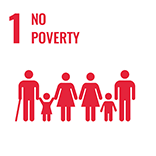
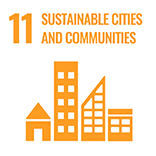
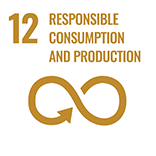

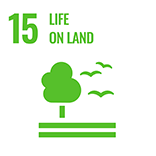


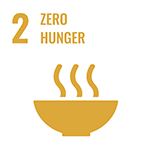
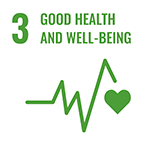

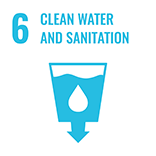


Comments
There is no content